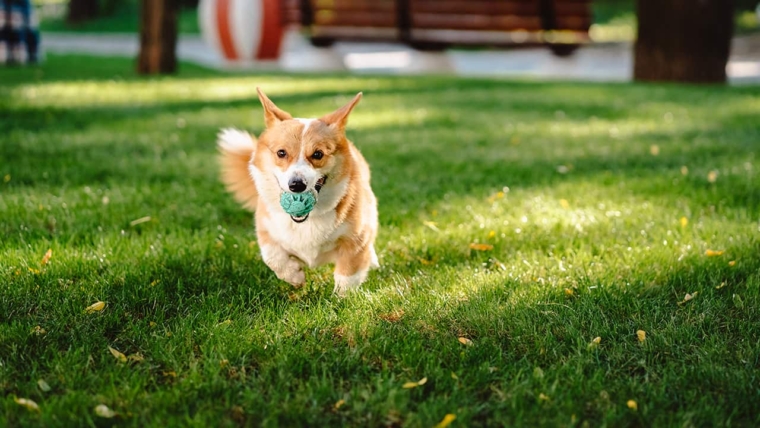
Emotional state is an important factor affecting the health of all living beings. Often pathologies in the body arise due to constant stress. Psychology and medicine describe in detail the relationship between psycho-emotional upheavals and diseases and even give a term to this phenomenon – psychosomatics.
Stress and depression are typical not only for people but also for animals. Constant nervous tension in pets leads to pain, decreased immunity and, consequently, to the development of somatic diseases. It is important not to ignore the “mental” state of your pet and minimize any factors that lead to anxiety and stress.
What causes stress in animals?
Cats and dogs have become an irreplaceable part of our lives. We have learned to understand them from the word go, to give each other warmth and comfort. Pets remember the intonation of our voice, easily learn commands and can solve complex logical problems. However, our pets need time to adapt to changes in the world around them, they slowly get used to the new environment, people and other animals.
Signs of stress and depression in pets
Our pets are most often stressed because the motility, environment, and communication with the owner are not meeting their basic needs.
Stress also leads to a state of stress:
Abusive treatment by humans. It is strictly forbidden to use physical punishment on pets. They will not help in education and training in any way, but will lead to anxiety and embitterment of the animal. Therefore, we recommend to punish only with a stern voice and only when you caught your pet for committing a crime (the toilet in the wrong place, spoiled furniture or broken flower pot), otherwise, the pet simply will not be able to relate for itself the 2 events.
2. Moving, traveling together. A new environment will make the pet nervous. Strangers, people, smells, sounds – everything unfamiliar seems dangerous.
3. Change of food. Nutrition is an important factor in an animal’s well-being. Our pets get used to one diet and have a hard time switching to a new one. However, it happens that an old brand of food goes off the market or a veterinarian prescribes a diet.
4. Several animals are hostile to each other. If 2 or more pets live in the house, they may share territory and attention from other family members. Dogs and cats are known to have a hard time getting along. If there are birds, rodents or fish in the house, they can fall prey to mustached predators.
That doesn’t mean that different pets can’t live in the same house. If you get a kitten and a puppy, they won’t be aggressive toward each other as adults. Also, an adult cat will be able to get along with a hamster and will not try to catch it.
However, if an adult cat with good hunting instincts is brought into a home with a parrot, the new pet may become prey to a predator. The bird will be constantly stressed by the attacks.
It is very important to gradually introduce the pets to each other without insisting on their contact.
5. Illnesses. Pain in the body leads to lethargy, decreased appetite and aggression. Therefore, during treatment, it is necessary to provide a four-legged friend with rest, to arrange a cozy “nest”.
How does stress affect a pet’s body?
Digestive disorders
The first warning sign is your pet’s lack of appetite. Always pay attention to your pet’s bowl: how much he ate, how often he asks for food, whether he drinks water during the day. Any deviation in eating behavior is a reason to visit the veterinarian. Severe nervous tension often provokes the development of vomiting or diarrhea.
Apathy or overstimulation
Each pet experiences stress differently. Some are characterized by lethargy, lack of interest in games, while others become overly energetic and aggressive.
Alopecia
Nervous licking in cats leads to skin wounds and bald spots. With constant aggression and adrenaline releases, dogs get itchy skin. The pet scratches and rolls around on the carpet or grass in an attempt to assuage the discomfort.
Marking Territory
Both cats and dogs begin to tag all corners of the house in an effort to fight bad emotions. This is how pets delimit their territory. Unconscious urination in the wrong place is another sign of stress.
From love to hate
Is the cat petting and then scratching violently? Does a dog bite while playing? These love-hate swings signal a troubled pet.
How do you treat a depressed pet?
1. Make sure your four-legged friend has no abnormalities. Visit your veterinarian regularly and have checkups. Almost any disease can be cured if caught early.
2. “Bad behavior” should be stopped immediately with a calm intonation in your voice. Animals are good at “reading” human emotions. So if you get angry, the pet will respond with aggression.
Provide space for your pet. Any “jumps” of mood is easier to survive in a cozy house or on a soft couch with your favorite toys: tracks, laser pointers, interactive models. Going for a walk, do not forget to take a ball or Frisbee. You can visit a new park or dog playground during your walk.
4. If moving or transporting your pet is imminent, take care of a sturdy, tightly fitting carrier. Be sure to let your pet get used to it. A few days before the planned trip, place the carrier bag at home, you can put inside the plaid, on which the four-legged friend is sleeping, or his favorite toys. This way, the carrier will not seem like a scary cage during the “trip”. If you are going to transport the bird, cover the cage with a thick cloth.
5. To minimize the stress of introducing a new diet, the following rules should be followed:
- switch smoothly to another food, usually the process takes 7 – 10 days;
- on the first day mix 6/7 of the usual food and 1/7 of the new food in the bowl, then increase the proportions in favor of the new food;
- on day 7, only the new food should remain in the bowl.
By following this rule, the pet will not notice the change and will happily eat the other food. This smooth transition will help the pet’s body get used to the new food composition, as well as the taste, smell, shape and size of the pellets.
Important: If he refuses to eat another food, he may not like the taste of the main ingredient. Some animals love only fish or only beef. Try purchasing this brand of food but with a different meat ingredient.
6. Determine what is an irritant to your four-legged friend. Maybe he is frightened by too loud noises from the TV, radio, or he encounters aggression from companions during a walk. Eliminate or minimize that trigger.
7. You can give your pet a sedative to reduce anxiety and tension. If a trip, a visit to the vet, or separation from the owner is imminent, the medication can help manage the fear.


